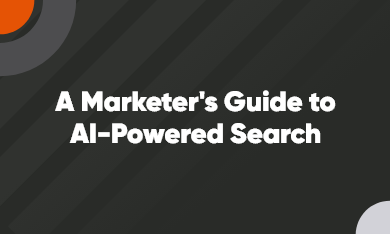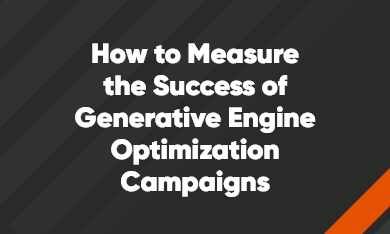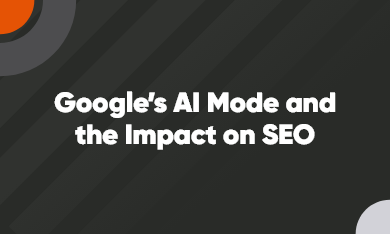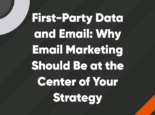
Preparing for GEO: 5 Essential Steps to Make Your Website LLM-Ready
Generative Engine Optimization (GEO) is quickly becoming an essential part of digital visibility. As search behavior evolves and users rely more heavily on tools like ChatGPT, Bing Copilot, Google Gemini, and other large language models (LLMs) to discover and engage with information online, those models need to access and understand your website content.
But here’s the catch: GEO isn’t just about being found in search results — it’s about being found in answers.
Unlike traditional SEO, which focuses on ranking in a list of results, GEO aims to position your site content to be cited, quoted, summarized, or linked to directly in AI-generated answers. This shift demands new strategies that prioritize structure, clarity, context, and accessibility — and it all starts with how your website is built, written, and connected to modern search systems.
In this article, we’ll walk you through five foundational ways to make your website more LLM-ready — steps that help search engines and AI tools understand your content, not just find it. From technical audits to strategic FAQs and About pages, these updates don’t just boost GEO; they strengthen your overall SEO as well.
Whether you're already seeing LLM-driven traffic or are just beginning to explore the landscape of AI-powered search, these tactics will help you prepare your site for the next generation of discovery.
1. Run a full technical audit
One of the best ways to prepare your content to perform well with large language models (LLMs) is to confirm that your site meets modern technical requirements. In other words, you need to make sure your content is crawlable, indexable, and that structured data accurately reflects the visible content on your pages.
A full technical audit provides a roadmap for fixing the invisible barriers that prevent your site from being effectively discovered, parsed, and cited by LLMs. While traditional SEO audits aim to improve rankings, a technical audit for GEO (Generative Engine Optimization) focuses on something even more fundamental: making your site understandable to machines.
Why a technical audit matters for LLMs
Unlike traditional search engines that display a list of links, LLMs understand and summarize your site’s content, then integrate it into rich, conversational answers. If your site is hidden behind technical errors, loaded in formats machines can’t easily parse, or structured in ways that create confusion, it won’t make the cut. The result? Your business won’t appear in AI-generated answers, no matter how useful your content might be.
Here are some key ways a technical audit surfaces LLM-specific issues:
✅ Ensures content is crawlable
LLMs don’t crawl the web directly — they learn from content indexed by search engines like Bing and Google. If your site isn’t being crawled and indexed properly, it’s effectively invisible to the systems feeding these models.
A technical audit helps uncover:
- Broken internal links that disconnect related content
- Non-indexable pages that prevent key information from surfacing
- Improperly configured robots.txt files that block important sections
- Missing or incomplete sitemap.xml files that limit discoverability
- Misused noindex tags that unintentionally exclude your best content
Even if your site looks fine to users, these invisible blockers prevent LLMs from accessing and learning from it.
✅ Identifies JavaScript or rendering issues
Many modern websites use JavaScript frameworks to display content dynamically — but this can be problematic for search engines and LLMs. If your most valuable content loads after the initial page render or only appears via user interaction, LLMs may never see it.
A technical audit identifies:
- Pages where essential content is rendered only on the client side
- Incomplete or missing fallbacks for non-JS environments
- Opportunities to implement server-side rendering (SSR), pre-rendering, or static HTML alternatives
Solving these issues ensures your content is machine-visible from the start — critical for LLM inclusion.
✅ Analyzes site architecture and internal linking
LLMs try to infer context, relationships, and meaning from your website’s structure. A clean, well-organized internal link structure helps these models understand how your content fits together, what’s most important, and what topics you cover in depth.
A technical audit uncovers:
- Orphaned pages with no internal links — invisible to crawlers and LLMs
- Content buried too deeply in your navigation
- Thin, redundant, or overlapping content that confuses machines (and people)
- Opportunities to create topical clusters or pillar pages that reinforce your authority in key subject areas
If your site isn’t technically sound, even the best content may never make it into an LLM response. A technical audit removes those barriers, aligning your site with how AI models discover and evaluate web content. For GEO, it's not just about being on the web — it’s about being understood by the machines that power the future of search.
2. Set up Bing Webmaster Tools
Setting up Bing Webmaster Tools improves your chances of having content appear in LLM responses overall, and especially those powered by Microsoft’s ecosystem, such as Copilot in Bing, Edge, and Windows, which use OpenAI’s models integrated with Bing search data.
If you’re well-versed in traditional search engines, you’re most likely familiar with Google Search Console and all the things that go with it: sitemaps, indexing, queries, landing page performance, etc. It’s time to add Bing Webmaster Tools to your roster, including Clarity, IndexNow, and the schema markup validator.
Skeptical? From ChatGPT, here are the ways Bing Webmaster Tools can help your site appear in LLM answers.

Bing Webmaster Tools doesn’t guarantee placement in LLM answers, but it’s one of the most actionable steps you can take to control how Bing sees your site, make your content more accessible to AI models that use Bing’s data, and optimize your site for context-based understanding.
Not familiar with Bing Webmaster Tools? Here’s a good resource from Bing to start learning about what’s available.
3. Create an “about” page
Surprisingly, many organizations and businesses have moved away from maintaining an about page in recent years. This is unexpected, given that it's typically one of the easiest pages to create — it's mostly narrative, requires minimal upkeep, and offers a high return on trust and discoverability.
While it might seem like a low-priority update, your about page plays a distinct and vital role in how both users and large language models (LLMs) understand and connect with your business. For LLMs, the about page establishes credibility, clarifies context, and associates your business with specific prompts, queries, or service categories. It provides human context to your brand—not just what you sell, but who you are, where you operate, and whom you serve.
Be sure to include essential details such as:
- Who you are (your founding story, values, or leadership)
- What you do (core services or products)
- When your business was founded
- Where you operate (your service areas, store locations, or states served)
- Who you serve (residential, commercial, industries, demographics)
- How to reach you (email, phone, address — even if repeated on your Contact page)
How an about page differs from a contact page
It’s easy to assume that a contact page serves a similar purpose, but these two pages serve very different roles:
- The contact page is transactional. It’s designed to help visitors take action: call you, email you, find your location, or submit a form. It’s about enabling communication.
- The about page is informational and relational. It helps explain why someone might want to contact you in the first place. It builds context, trust, and alignment with the visitor’s intent — and helps LLMs match your site with complex queries like “eco-friendly landscaping company in Wisconsin that serves commercial properties” or “locally owned HVAC company with 24/7 emergency support.”
In short, the about page supports discovery and relevance, while the contact page supports conversion. You need both to help your business be found, understood, and chosen — especially in an AI-driven search environment.
Other questions your about page can answer:
- Are you family-owned or part of a larger brand?
- Do you operate seasonally or year-round?
- Do you offer special services for certain industries or customer types?
- What sets your business apart in your category or community?
LLMs (and people!) are looking for these signals. If they can’t find them, they’re likely to highlight someone else.
4. Include FAQs and plain-language explanations
LLMs love Q&A content because it is highly structured and easy to quote. FAQ responses are prime candidates for appearing in AI Overviews or "People Also Ask" types of answers. FAQ answers make it easy for LLMs to understand your topic, recognize you as a source of authority, and quote or summarize your content in LLM answers. Some of the ways in which FAQs help LLMs understand your content include:
LLMs are trained on question-answer formats
FAQs match this question-and-answer format perfectly: a clear question + a concise, direct answer. Large language models (like ChatGPT or Bing Copilot) are heavily trained on that Q&A-style content.
Ability to target long-tail, conversational queries
People don’t just search LLMs for “water softeners.” Instead, they typically ask complex questions with ifs, ands, and buts. “Do I need a water softener if I have a filter?” or “Is softened water safe for drinking?” Adding these as FAQs helps you cover more ground in the kinds of natural-language questions LLMs and AI tools respond to.
FAQ categories work for every type of business
Question-and-answer formats for web content work well for virtually any business, organization, or entity. Combine your FAQ pages with the FAQ schema, and you’ll have a winning combination that LLMs can use to craft responses to long-tail, complex questions.
Not into FAQs in general? Try addressing myths or misconceptions. Myth-busting content that addresses common misconceptions about your product, service, or category is precisely the type of content LLMs use in crafting answers or prompt responses. Here’s an example:
Common myths about water filters
- Is a water softener the same as a water filter?
- Will a softener remove lead or bacteria?
- Is bottled water safer than filtered tap water
5. Track LLM traffic
Breaking out Large Language Model (LLM) traffic in Google Analytics demonstrates the impact of AI-powered search and interactions on your website. A few of the things you can learn from tracking LLM traffic to your site include:
- Understanding AI's impact: See what percentage of your traffic comes from LLMs and how it's growing.
- Identifying top AI platforms for your site and industry: Discover which LLM platforms (ChatGPT, Gemini, Perplexity, etc.) are sending you the most traffic.
- Content optimization opportunities: Learn which content resonates most with AI-driven queries.
- Engagement analysis and paths: Compare engagement metrics (sessions, key events, engagement rate) for LLM traffic vs. traditional sources.
- SEO strategy pivots: Adapt your SEO efforts to the evolving AI search ecosystem.
For our GEO clients, we see LLM referral traffic convert at a much higher rate than regular organic traffic and with longer engagement times. These visitors engage with the on-page content deliberately and intentionally. You can start tracking your LLM referral traffic on your own using Google Analytics 4. We wrote a separate post dedicated to creating a generative engine optimization measurement strategy, which includes setting up custom channel groupings in GA4 for LLM traffic. To get started, check out that post.
Embracing the future of search with GEO
As large language models become central to how people ask questions, research topics, and make decisions, you must prepare your website to participate in this new ecosystem. GEO — Generative Engine Optimization — is no longer a nice-to-have; it's a strategic advantage that places your content directly in the answers people trust.
By taking the five steps outlined in this article, you’re doing more than keeping up with search trends. You’re future-proofing your digital presence.
GEO isn’t just about machines understanding your site; it’s about real people finding your business quicker and easier, getting better answers, and choosing you because your expertise, experience, service area, and approach to getting things done are clearly represented.
At Perrill, we help businesses prepare for this shift with tailored strategies that blend technical SEO, content development, and advanced analytics to unlock the full value of GEO. Whether you're in e-commerce, professional services, manufacturing, or home services, our team can help you transform your website into a trusted source for both search engines and AI models.
Ready to optimize your site for GEO? Let Perrill be your guide to a smarter, more discoverable, and more impactful web presence. Reach out today to get started.

Jen Jones
Author
Jen Jones
Categories
Date
Explore with AI
Join Our Newsletter


How to Measure the Success of Generative Engine Optimization Campaigns


Google’s AI Mode and the Impact on SEO



